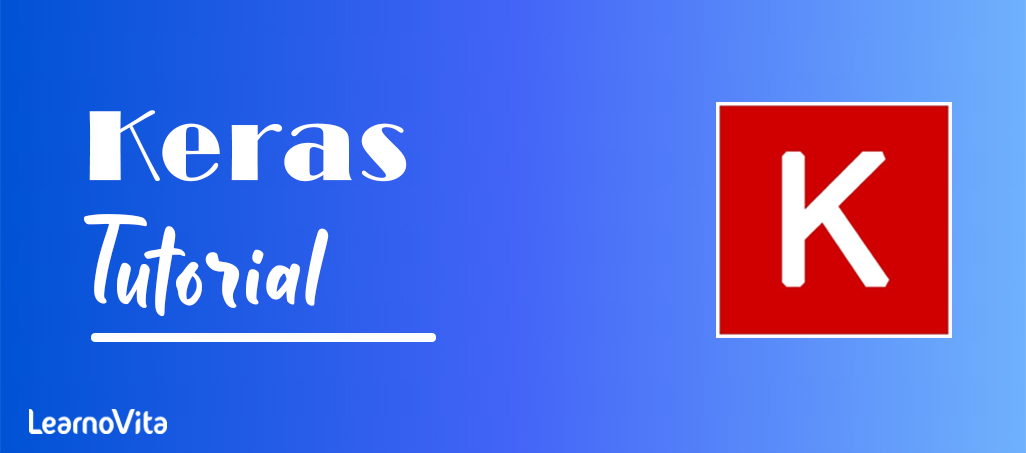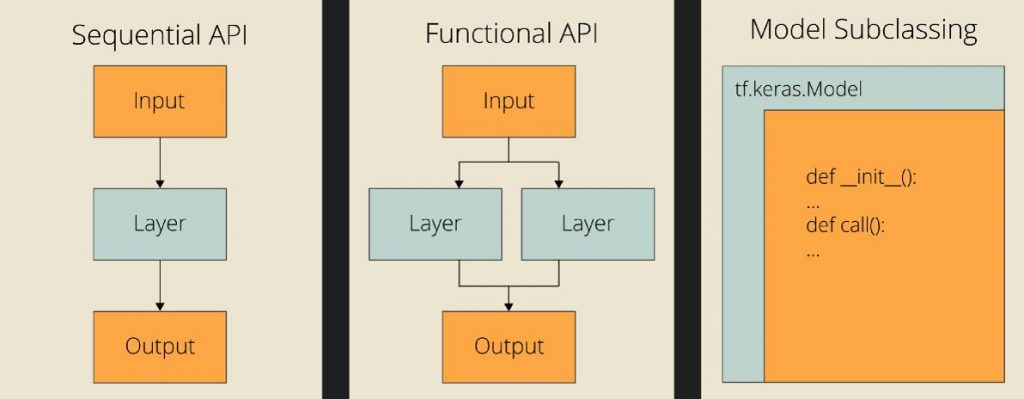
Keras Tutorial : What is Keras? | Learn from Scratch
Last updated on 10th Aug 2022, Blog, Tutorials
It is made user-friendly, extensible, and modular for facilitating quicker experimentation with deep neural networks.
It not only supports a Convolutional Networks and Recurrent Networks individually but also for their combination.
It cannot handle low-level computations, so it made use of the Backend library to solve it.
What makes Keras special?
- Focus on user experience has always been a main part of Keras.
- Large adoption in an industry.
- It is a multi backend and encourage multi-platform, which helps all the encoders for come together for coding.
- Research community present for Keras works amazingly with a production community.
- Simple to grasp all concepts.
- It supports a fast prototyping.
- It seamlessly runs on CPU as well as GPU.
- It offer the freedom to design any architecture, which then later is utilized as an API for the project.
- It is really very easy to get started with.
- Simple production of models actually mades Keras special.
Keras user experience
1. Keras is an API designed for humans
Best practices are followed by Keras to reduce cognitive load, ensures that the models are consistent, and for the corresponding APIs are simple.
2. Not designed for machines
Keras offers clear feedback upon the occurrence of any error that minimises the number of user actions for the majority of the general use cases.
3. Easy to learn and use.
4. Highly Flexible
Keras offer high flexibility to all of its developers by integrating low-level deep learning languages like TensorFlow or Theano, which ensures that an anything written in the base language can be implemented in Keras.
How Keras support the claim of being multi-backend and multi-platform?
Keras can be made in R as well as Python, like that the code can be run with TensorFlow, Theano, CNTK, or MXNet as per the requirement
Keras can be run on CPU, NVIDIA GPU, AMD GPU, TPU, etc.
It ensures that producing models with the Keras is really simple as it totally encourage to run with TensorFlow serving, GPU acceleration (WebKeras, Keras.js), Android (TF, TF Lite), iOS (Native CoreML) and Raspberry Pi.
Keras Backend
Keras being a model-level library helps to developing deep learning models by offering high-level building blocks.
All the low-level computations like products of Tensor, convolutions, etc. are not handled by Keras itself, rather they depend on a specialized tensor manipulation library that is well optimized to serve for backend engine.
Keras has managed it so perfectly that instead of incorporating single library of tensor and performing operations related to that specific library, it offers plugging of various backend engines into Keras.
Keras consist of 3 backend engines, which are as follows:
TensorFlow
TensorFlow is a Google product, which is one of the most popular deep learning tools widely used in the research area of machine learning and deep neural network.
Theano
Theano was developed in University of Montreal, Quebec, Canada, by the MILA group
It is open-source python library that is used for a performing mathematical operations on multi-dimensional arrays by incorporating scipy and numpy.
It utilizes GPUs for quicker computation and efficiently computes the gradients by building symbolic graphs automatically.
It has come out to be more suitable for unstable expressions, as it first observes them numerically and then computed them with more stable algorithms.
CNTK
Microsoft Cognitive Toolkit is a deep learning’s open-source framework.
It consists of all the basic building blocks, which are need to form a neural network.
The models are trained by using C++ or Python, but it incorporates C# or Java to load the model for the making predictions.
Advantages of Keras
It is very simple to understand and incorporate the faster deployment of network models.
It has large community support in the market as most of the AI companies are keen on using it.
It supports multi backend, which means that can use any one of them among TensorFlow, CNTK, and Theano with Keras as a backend according to your requirement.
Since it has an simple deployment, it also holds support for cross-platform. Following are the devices on which Keras can be deployed:
- 1. iOS with CoreML
- 2. Android with TensorFlow Android
- 3. Web browser with .js support
- 4. Cloud engine
- 5. Raspberry pi
It supports Data parallelism, which means Keras can be trained on a multiple GPU’s at an instance for speeding up for training time and processing a huge amount of data.
Disadvantages of Keras
The only disadvantage is that Keras has its own pre-configured layers, and need to create an abstract layer, it won’t let because it cannot handle low-level APIs.
It only encourage high-level API running on the top of the backend engine .
Keras Models

Keras has two types of in-built models; Sequential Model and advanced Model class with functional API.
The Sequential model tends to be one of the easiest models as it constitutes a linear set of layers, whereas the functional API model leads to the creation of an arbitrary network structure.
Keras Sequential Model
The layers within the sequential models are sequentially assembled, so it is known as Sequential API. In most of the Artificial Neural Network, the layers are assembled , such that the data flow in between layers is in a particular sequence until it hit the output layer.
Keras layers
Keras encompasses a wide range of predefined layers as well as it permits to create an own layer.
It acts as a main building block while building a Keras model.
In Keras, whenever each layer received an input, it performs few computations that result in transformed information.
The output of one layer is fed as input an other layer.
Keras Core layer comprises of a dense layer, which is a dot product plus bias, an activation layer that transfers a function or neuron shape, a dropout layer, which randomly at every training update, sets a fraction of input unit to zero
so as to avoid the problem of overfitting, a lambda layer that wraps an arbitrary expression just like an object of a Layer, etc.
Following are the number of common methods that each Keras layer have:
- get_weights():
- the layer’s weights as a numpy arrays list.
- set_weights(weights):
- It sets the layer’s weight with the same shapes as that of the output of get_weights() from numpy arrays list.
- get_config():
- It returns a dictionary that includes the layer’s configuration, so as to instantiate from to config through;
- Core Layer
- Convolution Layer
- Pooling Layer
- Locally Connected Layer
- RNN Layer
- Noise Layer
- Layer Wrapper
- Normalization Layer
- Embedding Layer
- Advanced Activation Layer
Keras backends
Keras is a model-level library, offers high-level building blocks that are useful to developed deep learning models.
Instead of supporting low-level operations like tensor products, convolutions, etc. itself, it depends upon the backend engine that is well specialized and optimized tensor manipulation the library.
It doesn’t pick just one library of a tensor to implement a Keras tied to that specific library.
It handles the situation in a modular way by seamlessly plugging more distinct back-end engines to Keras.
Following are the 3 available backend implementations, which are as follows;
TensorFlow:
This Google-developed for framework for symbolic tensor a manipulation is open-source.
Theano:
It is also open-source framework for symbolic manipulation of a tensor is developed at Universite de Montreal by LISA Lab.
CNTK:
It is developed by Microsoft, which is open-source deep-learning toolkit.
Advantages of Keras
1. Simplicity
Keras is very easy.
It is a user-friendly API with simple to learn and code feature.
It is so simple to start with Deep Learning using Keras.
The functions in Keras are simple .
It becomes simple to design neural network models using Keras.
2. Backend Support
Keras does not operate with the low-level computations.
So, it supports the use backends.
It runs off the top of TensorFlow, Theano, and Microsoft CNTK.
These are few libraries that Keras use for backend support.
It offers the user the opportunity to choose among this backend support as per the requirement.
3. Pre-trained Models
Keras offers numerous pre-trained models.
There are models besides on the pre-trained weights.
These models help users to easier their tasks.
There are different image classifications models:
- VGG16
- VGG19
- Xception
- NASNet
- MobileNet
- MobileNetV2
- InceptionV3
- InceptionResNetV2
4. Fast Experimentation
Keras is build to simplify the tasks of users.
It enables users to finish heir tasks with minimum efforts.
Keras has the ability to built neural network models with fewer lines of the code.
It has good support for functions that enable the users for fast deployment.
5. Great Community and Calibre Documentation
Keras has a more supportive community.
It offers code on an open-platform.
This community allows the researchers to publish their code and experimentation details to the public.
This community never fails to respond to the queries of an users.
It also has standard documentation.
It helps to use to dealing with Keras.
This documentation contains each detail of the functions and its tutorials.
It is in a proper and a sequential manner.
The documentation is enriched with examples to made the task of the users easy.
Drawbacks of Keras
1. Some Improvable Features
There are some features in Keras that have space for an improvement.
It lacks few pre-trained models to use.
Keras does not support features or dynamic chart creation.
2. Inefficient Errors
The errors given by the Keras library are not effective.
There is a need for the errors to be simply identifiable.
It is not more useful and helpful to detect the root cause of the error.
It is difficult to the debug in Keras.
3. Low-level API
Keras gives for low-level errors many times.
The reason for these low-level errors is that there are some functionality and an operation that Keras is not capable of.
Also, Keras is not capable to handle the low-level computations.
Therefore, it runs on the top of the TensorFlow, Theano, and Microsoft CNTK.
Are you looking training with Right Jobs?
Contact Us- Windows Azure Interview Questions and Answers
- Salesforce Architecture Tutorial
- Wrapper Class in Salesforce Tutorial
- salesforce lightning
Related Articles
Popular Courses
- VM Ware Training
11025 Learners - Microsoft Dynamics Training
12022 Learners - Siebel Training
11141 Learners
- What is Dimension Reduction? | Know the techniques
- Difference between Data Lake vs Data Warehouse: A Complete Guide For Beginners with Best Practices
- What is Dimension Reduction? | Know the techniques
- What does the Yield keyword do and How to use Yield in python ? [ OverView ]
- Agile Sprint Planning | Everything You Need to Know
